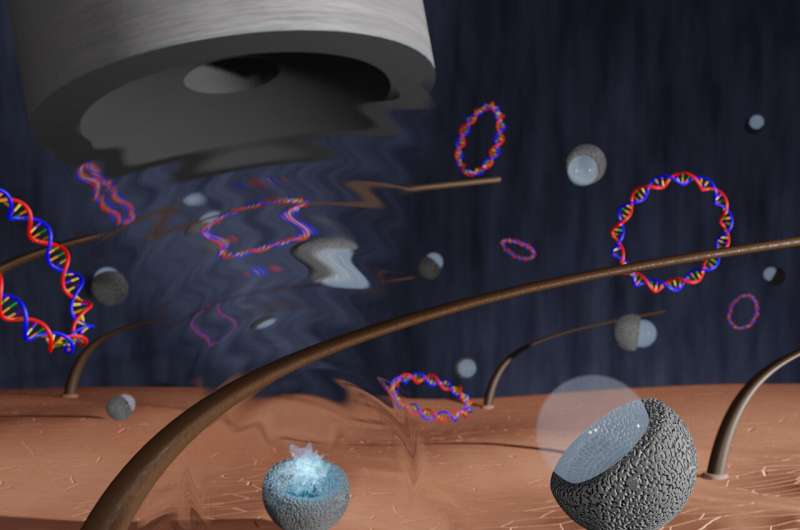This article has been reviewed according to Science X's editorial process and policies. Editors have highlighted the following attributes while ensuring the content's credibility:
fact-checked
trusted source
proofread
Investigating needle-free ultrasound vaccine delivery

An estimated quarter of adults and two-thirds of children have strong fears around needles, according to the U.S. Centers for Disease Control and Prevention. Yet, public health depends on people being willing to receive vaccines, which are often administered by a jab.
Darcy Dunn-Lawless, a doctoral student at the University of Oxford's Institute of Biomedical Engineering, is investigating the potential of a painless, needle-free vaccine delivery by ultrasound. He will share the recent advancements in this promising technique as part of Acoustics 2023 Sydney, held Dec. 4–8 at the International Convention Center Sydney. His presentation will take place Dec. 4 at 11:00 a.m. Australian Eastern Daylight Time.
"Our method relies on an acoustic effect called 'cavitation,' which is the formation and popping of bubbles in response to a sound wave," said Dunn-Lawless. "We aim to harness the concentrated bursts of mechanical energy produced by these bubble collapses in three main ways. First, to clear passages through the outer layer of dead skin cells and allow vaccine molecules to pass through. Second, to act as a pump that drives the drug molecules into these passages. Last, to open up the membranes surrounding the cells themselves, since some types of vaccine must get inside a cell to function."
Though initial in vivo tests reported 700 times fewer vaccine molecules were delivered by the cavitation approach compared to conventional injection, the cavitation approach produced a higher immune response. The researchers theorize this could be due to the immune-rich skin the ultrasonic delivery targets in contrast to the muscles that receive the jab. The result is a more efficient vaccine that could help reduce costs and increase efficacy with little risk of side effects.
"In my opinion, the main potential side effect is universal to all physical techniques in medicine: If you apply too much energy to the body, you can damage tissue," Dunn-Lawless said. "Exposure to excessive cavitation can cause mechanical damage to cells and structures. However, there is good evidence that such damage can be avoided by limiting exposure, so a key part of my research is to try and fully identify where this safety threshold lies for vaccine delivery."
Dunn-Lawless works as part of a larger team under the supervision of Dr. Mike Gray, Professor Bob Carlisle, and Professor Constantin Coussios within Oxford's Biomedical Ultrasonics, Biotherapy and Biopharmaceuticals Laboratory (BUBBL). Their cavitation approach may be particularly conducing to DNA vaccines that are currently difficult to deliver. With cavitation able to help crack open the membranes blocking therapeutic access to the cell nucleus, the other advantages of DNA vaccines, like a focused immune response, low infection risk, and shelf stability, can be better utilized.



















